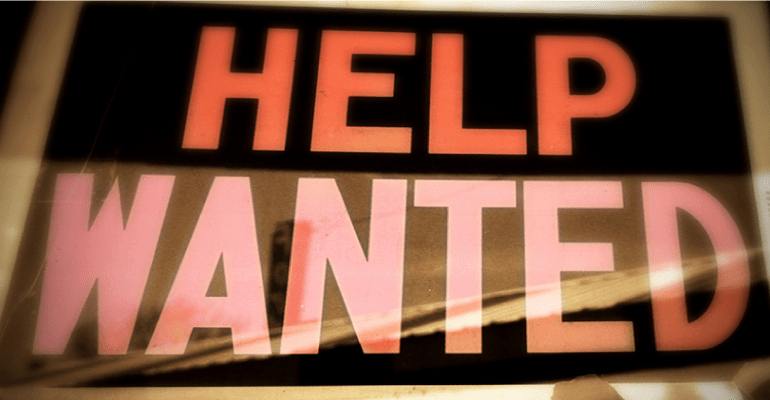
A Thumbnail Opinionated History
Work is what built this world, work done by workers, sometimes for themselves, but more often for someone else, the boss, who paid them wages. And because the boss wanted maximum profits, he paid those workers as little as he could get away with, working them long hours, 14-15 hours a day, 6-1/2 days a week, with time off only to go to church.
In early America people, black and white, were brought over as indentured servants, and bound to a master for a period of time to repay the costs of their voyage. About half of European immigrants in the 1600s came as indentured servants, now outlawed as a form of slavery.
But not all workers received wages. Early colonial rulers decided that black Africans did not have to be freed eventually as white indentured servants were, and American chattel slavery was born. Slaves were provided subsistence shelter and food, and were beaten or murdered if they dared to complain. Children were taken from their parents and sold to others.
Mistreatment and exploitation bred revolts, whether slave revolts such as Nat Turner led, or the creation of secret worker organizations to resist, sometimes with violence, the boss’s greed and brutality. Irish coal miners in Pennsylvania called themselves the Molly McGuires in the late 1860s-70s and fought back with murder and arson. The bosses fought as well, and 20 Irish coal miners were hanged in 1877 and 1878, suspected of being Molly McGuires. In company towns criticizing management was quickly followed by firings and evictions.
Early unions developed from the secret societies and were fought by the bosses, often with the help of armed private detectives, local police, and state militias. The Knights of Labor was formed in 1869 to fight for the 8-hour day within the emerging industrial capitalist economy, rejecting socialism and anarchism. At their peak the Knights had some 800,000 members, about 20 percent of the U.S. labor force, including black and women workers.
In May of 1886 the Knights of Labor led a national strike for the 8-hour day. At a rally in Chicago’s Haymarket Square, which was also protesting police killing of strikers, an unknown person threw a bomb at police and a riot ensued leaving at least 11 dead. Eight leading anarchists were arrested, tried and convicted of conspiracy, although there was no evidence linking them to the bomb. Four were hung and one committed suicide. Death sentences for two were commuted, and they, along with the remaining living defendant, were later pardoned by the Governor of Illinois. The May 1 start of the strike was the origin of May Day as a workers’ holiday, later adopted by unions around the world, and by leftists in the United States.
Labor Day actually pre-dated May Day as a workers’ holiday, starting with a parade organized by the Central Labor Council in New York City on September 5, 1882. After Haymarket, cities and states were quick to adopt the hopefully-less-radical Labor Day as a holiday to celebrate working people.
Haymarket was the beginning of the end of the Knights, and later that year the American Federation of Labor (AFL) was founded by a collection of craft unions who rejected militant action and sought to improve wages and conditions by controlling the number of people working in a trade. They supported capitalism and modeled their organizations after businesses, becoming known as “business unionism.” Initially welcoming minorities and women, but not Chinese workers, the AFL sometimes chartered separate, segregated, locals but soon became a white male organization.
In 1905 the Industrial Workers of the World, IWW, or Wobblies, was founded in Chicago by an assortment of radicals, including socialists and anarchists. They did not need Marxist analysis to understand that profit was made up of the difference between what workers were paid and what the product sold for after other production costs were factored in.
The IWW championed industrial unionism, uniting all the workers in a factory or industry rather than dividing them by craft. They were also openly anti-capitalist, declaring in their Constitution that “The working class and the employing class have nothing in common…It is the historic mission of the working class to do away with capitalism.”
They gained strength in some of the hardest and most-exploited occupations including mining, longshoring, textile and agriculture, and unlike the AFL, welcomed all workers – men, women, immigrants, African Americans, Asians, Latinos – into their ranks. They preferred not to have written contracts, but to decide what their wages should be day-by-day. Employer violence against strikers was sometimes met with Wobbly violence against property.
Employers and politicians set out to destroy the IWW, and with World War I as an excuse, they went on the attack. In Bisbee, Arizona, in July of 1917, 1200 striking copper miners of 35 ethnicities were rounded up at gunpoint by over 2000 specially deputized men, loaded into box cars and cattle cars, and dumped in the New Mexico desert. In other areas Wobblies were murdered, imprisoned and deported. Those attacks, and the traditional inability of various leftist groups to agree on a program to work together, soon saw the IWW in steep decline.
In the 1920s corporations and government teamed up to promote “The American Plan,” using armed thugs, firings of militants, open shop pledges, strikebreaking and boycotts of unionized vendors to reduce union membership by 25 percent, from over 5 million to 3-1/2 million. Then came The Great Depression. President Herbert Hoover convened meetings of corporate executives to seek cooperation to get the economy back on track, but the capitalists could no more reach agreement than the old leftists could. Hoover is quoted saying, “The only problem with capitalism are the capitalists. They’re too damned greedy!” (Continued tomorrow.)
